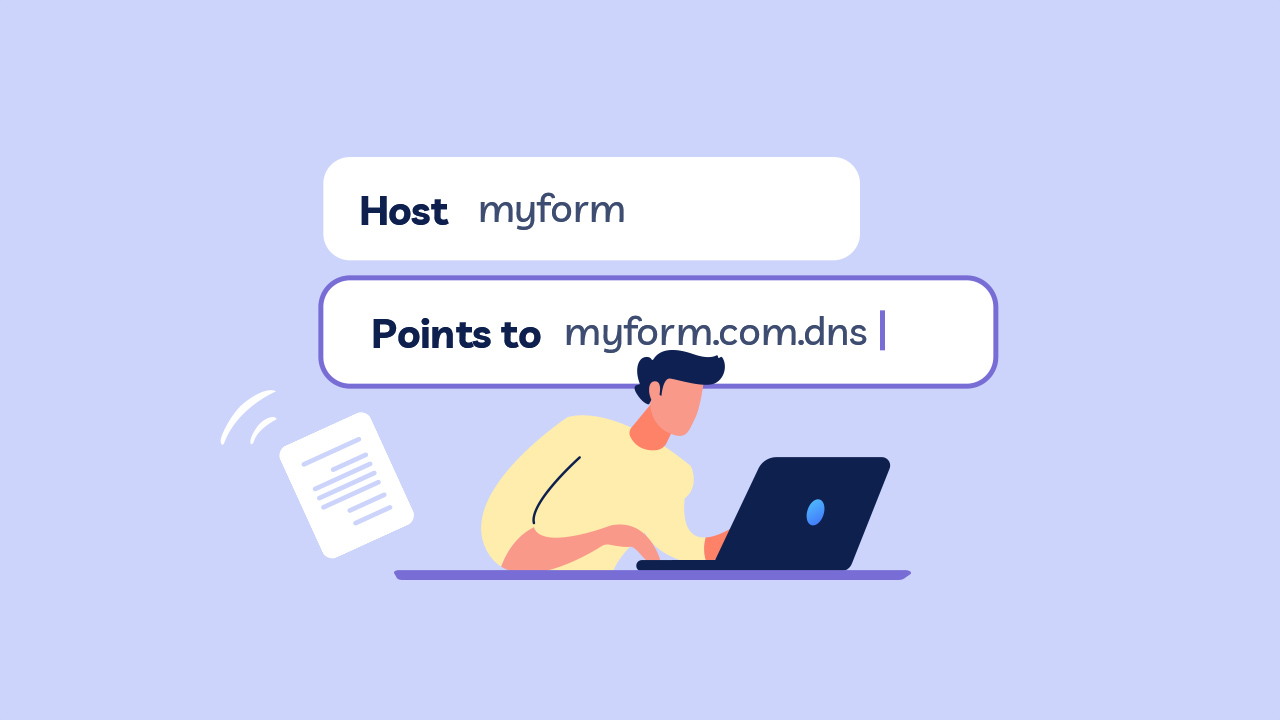
Greetings, fellow business owners! Are you ready to take your online forms to the next level? Today, we’re diving into the world of domains and uncovering why having a custom domain for your online forms can be a total game-changer for your business.
In this blog, we’ll explore:
What is a ‘domain’?

Let’s start with the basics. What exactly is a domain? Think of it as the digital address of your business on the internet. Just like your physical address, your domain is how people find you online. Some famous examples include giants like google.com, amazon.com, and our friends at PlatoForms, who rock the domain platoforms.com.
In simple terms, a domain is your online address, like google.com or platoforms.com.
Why domain is important?
Now, you might be wondering, “Why should I even care about my domain?” Well, my friend, your domain is the digital front door to your business. It’s the first thing people see when they stumble across your online presence, and making a great first impression is crucial in today’s fast-paced digital landscape.

Imagine you’re walking down the street and you see two different storefronts. One has a sleek, well-designed sign, and the other has a handwritten piece of paper taped to the window. Which one would you be more likely to walk into? It’s the same idea with your online presence.
In essence, your domain is your digital storefront sign, and you want it to appear sharp, professional, and, above all, trustworthy.
How to set up a domain?
Setting up a domain doesn’t need to be complicated. Nowadays, it’s straightforward. You can register a domain through services like GoDaddy or Namecheap, then manage it easily on their platforms. Here’s what you do:
- Visit their website.
- Check if your domain name is available.
- If it is, register it.
- Provide your information and pay.
- Follow their instructions to complete the process.
- Once done, you can manage your domain directly on their website.
Read more: 8 Tips for Choosing a Domain Name for Business Success in 2024.
Why domain matters for online forms?
Let’s delve into why setting up a custom domain is vital for your online forms. Consider this: when you share a form with your clients or customers, the link they see is their initial point of contact. Wouldn’t you prefer this link to represent your brand and instill trust, rather than being a generic, forgettable URL?
Here are several reasons why using a custom domain for your online forms is so advantageous:

-
Enhances professionalism: Receiving a form from a company with a random URL like randomwebsite.com/forms/123 lacks credibility. Utilizing your custom domain, such as mycompany.com/form, demonstrates your business’s professionalism and credibility.
-
Promotes brand recognition: Your custom domain instantly identifies your business to viewers, aiding brand recognition and retention.
-
Improves accessibility: Random URLs are challenging to recall. Using your business name as the domain facilitates easy access for customers.
-
Enhances security: A custom domain allows you to implement SSL encryption, safeguarding sensitive information in your PDF forms and providing peace of mind to customers.
By leveraging a custom domain, you can elevate the professionalism, credibility, and accessibility of your forms, akin to laying out a welcoming mat at the entrance of your digital storefront. Additionally, customers will find it easier to remember and access your forms with your branded domain in the link.
How to set up custom domain on PlatoForms?
PlatoForms lets you use your own domain for all your online forms, keeping your data secure with HTTPS/SSL encryption. We partner with Let’s Encrypt to ensure your custom domain gets full HTTPS protection within about 4 hours of activating the CNAME record.
What is a CNAME? A CNAME (Canonical Name) record is a type of DNS (Domain Name System) record used to alias one domain name to another. It’s commonly used when you want a subdomain or a custom domain (like “forms.yourdomain.com” or “yourcustomdomain.com”) to point to another domain (like “platoforms.com”). Essentially, it acts as a shortcut or alias for one domain to another. When someone accesses the domain with the CNAME record, their request is redirected to the domain it points to.
PlatoForms simplifies custom domain setup for your online forms. To verify and set up a custom email domain for your forms, follow these steps:
-
Before You Begin:
- Obtain a domain name from a registrar like GoDaddy or Namecheap.
- Create a subdomain for your form if necessary (e.g., “myform.mydomain.com”).
- Have access to your domain’s DNS records.
-
Verify Email Domain:
- Navigate to the Email Domain Verification section in your PlatoForms dashboard.
- Enter your desired domain name and click Verify Domain.
- Copy the
SPFandDKIMvalues provided to your domain’s DNS records. - Test the settings to ensure correct verification, which may take a few minutes to hours.
-
Set Up Verified Domain:
- In the Form Default Settings, under Invitation Settings, enter a sender name and email for your verified domain.
- Save the settings, and the sender name and email will auto-fill in the Invitation panel for all team members.
For more detailed instructions, please refer to our user documentation - Send email with custom domain.
In conlusion
Setting up a custom email domain for your forms not only makes you look more professional but also keeps your data safe. Just follow our user documentation for more help.
With PlatoForms, you can do a lot more than just email domains. You can turn complicated PDFs into easy online forms, create forms that match your brand, and connect them with other tools like Slack and Mailchimp to make your work easier. Try PlatoForms now and see how it can simplify your form management!




